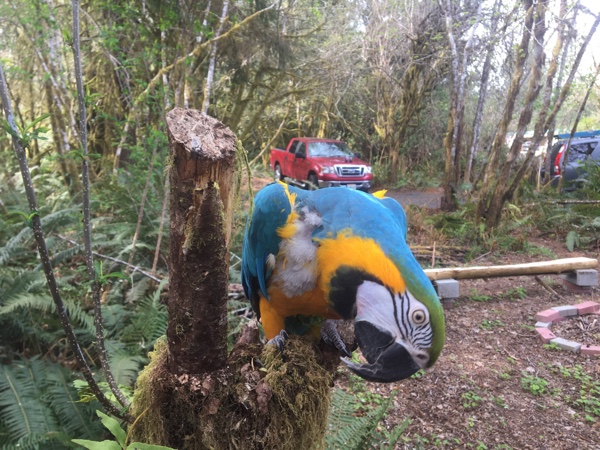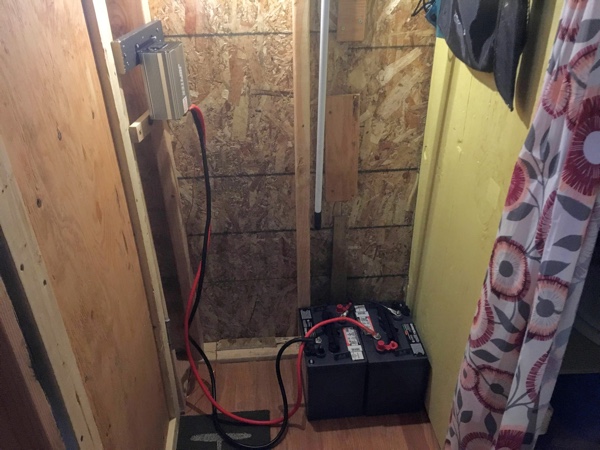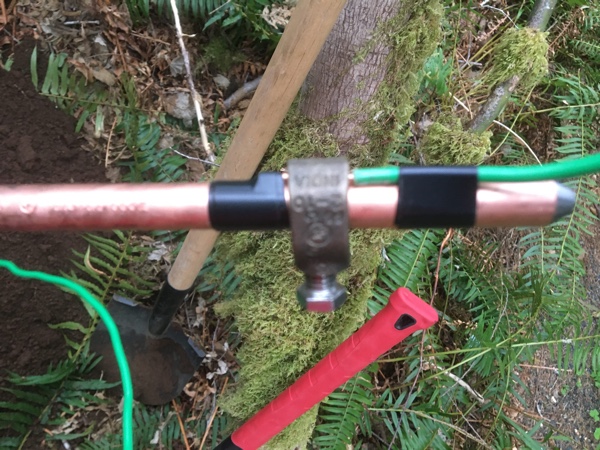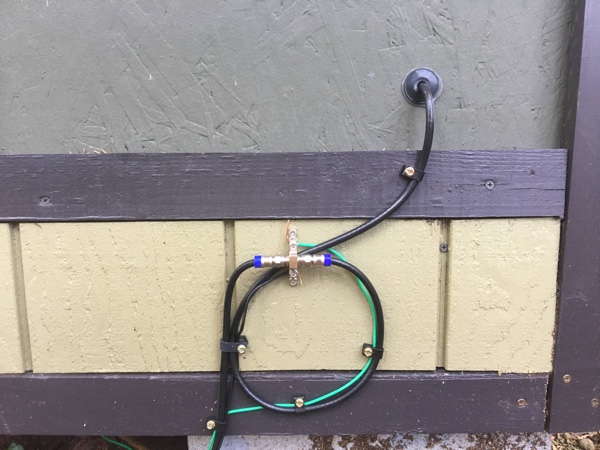
April 29, 2021
Now that the mice are gone, I started spending weekends at my cabin again. One day, it occurred to me…if I had Internet at my cabin, I could just as easily work from there as I could back in the city. My ex had given me a 200 watt portable power station for Christmas. It should work for powering a wireless router; I just needed to figure out how to get signal. And I already new from experience, my JetPack wouldn’t work in the cell phone dead zone. I needed another solution.

When that deer had been hit and left to die in my driveway, I’d gone over to my neighbors for help. And was very surprised when one of them pulled out his cell phone to call for permission to dispatch the animal. How was that possible in a cell phone dead zone? It turns out contrary to what my other neighbor had told me, satellite Internet was very much a possibility.
I could do satellite, I think.
I called HughesNet, the only satellite service provider in the area, and yes, I could get satellite Internet. They only thing they needed was a clear view of the southern sky. I have a chainsaw; I can cut down trees, if needed!
I made an appointment for the end of April. The customer service rep assured me that yes, I could use my power station to power the dish’s modem. The installer called me to confirm a few days before the appointment. I excitedly said yes, I’d be there, confirmed the address, and mentioned my portable power station.
“You can’t use that,” the technician said.
“What?!?” I replied, shocked.
“These have to be grounded. We have to connect it to your building’s ground system. Portable power stations aren’t grounded. We’re going to have to cancel your appointment.”

I was shocked. I called the HughesNet customer service number. The woman I spoke with confirmed that yes, satellite dishes have to be grounded using the building’s electrical system. This is an electrical code requirement; they could make no exceptions.
Well, that bites. The cabin isn’t grounded because it’s not wired for electricity. I asked her to please reschedule the appointment. I still had a few days. Whatever needed to be done, I would do it. The first installers refused to come out, but she found another who was willing.
But, how do you ground something that isn’t wired? I didn’t know what to do, but I have some very smart friends on Facebook. I posted my dilemma, and my smart friends came to the rescue.
Golf cart batteries and an inverter.
Two 6V golf cart batteries connected in series and then to an inverter should do the job. I picked up two Duracell 6V 235 amp batteries, cables, an inverter, a charger, and a set of battery carrying straps from Batteries Plus. The sales guy at Batteries Plus assured me this was all I needed. I could charge the batteries at home, take them with me and use while I was out there, and then bring them home with me for recharging. It wasn’t a perfect setup, but it would do.

The last thing I needed was the grounding rod and wire, which I was able to pick up at Home Depot. I hauled it all out to my cabin the day before the installation appointment. Unfortunately, the inverter didn’t have a grounding screw. Back it went, and Harbor Freight to the rescue! I hooked up the two golf cart batteries in series, connecting red terminal to black with a short jumper cable. The other red terminal then connected to the positive terminal on the inverter, and the black to the negative, using long, heavy-duty jumper cables.
The inverter whirred to life. Yes, it worked!
The grounding rod was last. My cabin sits on three feet of top soil and clay, and then forty feet or more of solid sand stone/clay something. It’s hard! I knew I wouldn’t be able to pound the eight-foot grounding rod straight into the ground. Alternatively, I could try pounding it in at a 45-degree angle. However, that would still mean it would need to go down four feet.

Electrical code allows a third option–burying the rod horizontally. I needed only 30″ to do this. Sweet! I grabbed my maddox axe and got busy. About an hour later, I had an eight foot long, thirty inch deep ditch dug along the path to the cabin. I dropped the rod in, ran the grounding rod cable to the cabin, and wired it to the inverter. Perfect! I buried everything and waited for the installer.
It took him a couple of hours to install the satellite dish. Because my lot is so heavily wooded, the dish is on the very southern edge, along the creek, right across from my neighbors’ house. The nice thing for me is it’s pretty much hidden in the trees. I don’t have to see it at all. For my neighbor, it’s a not quite so invisible. But, there’s not much I can do about that.
The system works great! I love having Internet on demand out at my cabin. I love using my front deck as my office. And the really great thing is I have Internet and cell phone service only when I want it. I have to actually flip the switch on the inverter. Otherwise, no Internet! No phone service!

So, my system uses two 6V 235 amp batteries, which provide about 20 hours of satellite service, just enough for two telecommute days. However, my portable power stations work, as well. These are not something I would use during a thunderstorm, of course. And, I don’t leave them hooked up when I’m not using the satellite service.
However, the golf cart batteries weigh 65 pounds each. That’s heavy! My portable power stations weigh about seven pounds each. And, each can provide about eight hours of power to the modem. So, honestly, I use my portable power stations more often than I use the golf cart batteries. And, they’re a great option when I’m out there on the weekend and just want an hour or two of service to check messages, make phone calls, etc. But, I didn’t have a choice–the satellite system required golf cart batteries in order to meet code. And, I had to meet code before the satellite dish could be installed.
Total cost for the battery power system–about $600. The satellite service runs an additional $85 per month. So, this is not cheap, by any means, but it’s worth it. Being able to spend an additional two days per week at my cabin and having the peace of mind knowing I can call emergency services if needed is well worth the cost.